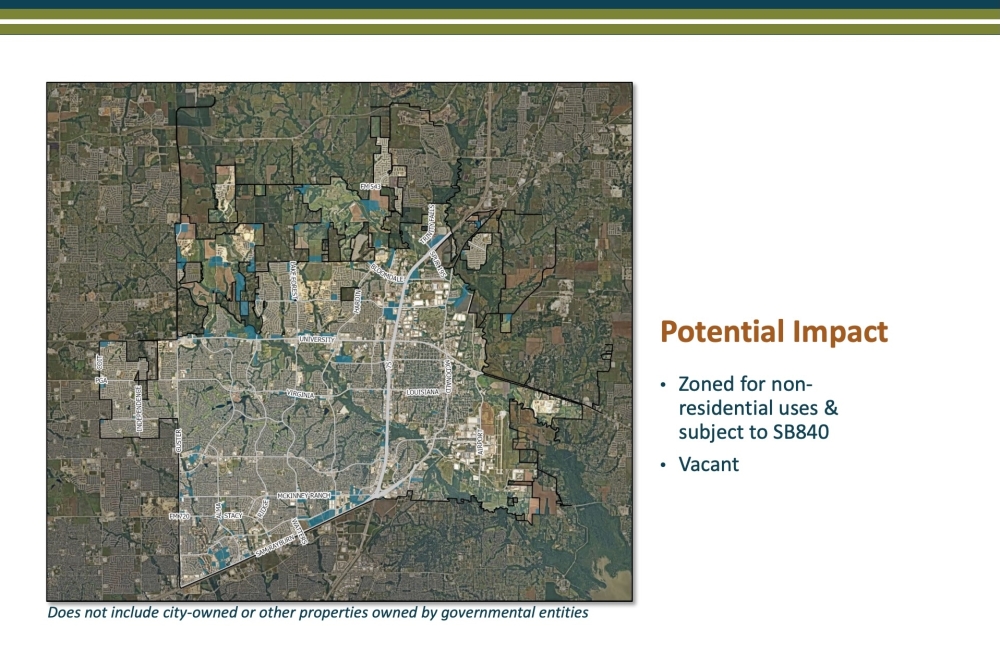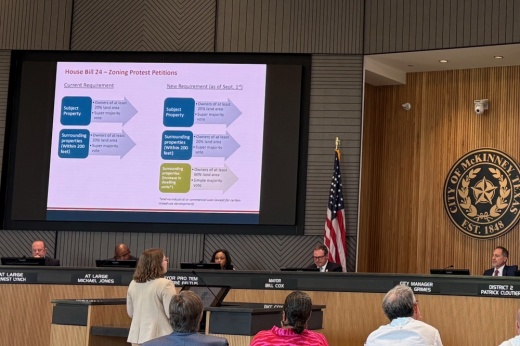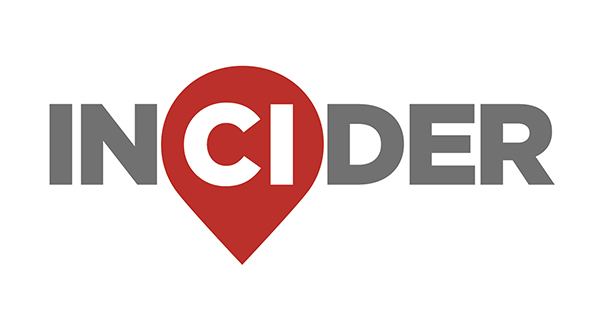The bill requires certain cities to permit multifamily and mixed-use residential developments in all nonresidential zoning districts. City Planning Manager Hayley Angel broke the bill down during a joint meeting between McKinney City Council and the city's Planning and Zoning Commission held Aug. 19.
City staff are expected to bring amendments to the commission for consideration in September. Council members will vote on the same amendments later in the month.
In a nutshell
SB 840 was passed by the Texas Legislature and signed into law by Gov. Greg Abbott on June 20. Once the bill takes effect, it will only apply to cities with a population higher than 150,000 that are located within a county with a population higher than 300,000. Other cities that will be impacted include Plano and Frisco.
“The crux of the bill is that it says that as a municipality we must allow multifamily and mixed-use land uses where office, commercial retail, warehouse and similar uses are allowed,” Angel said.
McKinney’s development code currently includes three zoning classifications for commercial uses, two zoning classifications for office uses and two zoning classifications for industrial or warehouse uses.
“It preempts our ability to say in our nonresidential zoning districts that multifamily or mixed-use is not allowed,” Angel said.
The details
The bill will also limit the city’s ability to regulate density, building height, setbacks and parking requirements for multifamily developments in any zoning district. According to the bill, the city cannot set limits more restrictive than:
- Density: 36 units per acre
- Building height: 45 feet
- Setback/buffer distance: 25 feet
- Parking: 1 parking space per dwelling unit
- Maximum density: 30 units per acre
- Maximum building height: 55 feet
- Setback/buffer with residential adjacency: 30 feet at least depending on building height
- Parking: 1.75 parking spaces per dwelling unit.
“We’re really looking north of [University Drive] at some of those newer larger developments that have recently gone through entitlement processes as well as along SH 121,” she said.

The plan
When considering a response to the bill, city staff focused on four main objectives, Angel said.
- Maintain a compatible development pattern
- Continue to require high-quality development
- Preserve opportunities for commercial development
- Provide options for developments to follow today’s standards
“That is a brief preview into what we’re looking at and considering, and why we’re moving forward with those options,” Angel said.
City staff is expected to bring code amendments to the commission for consideration and a vote on Sept. 9. City Council is expected to vote on the amendments Sept. 16, according to the presentation.
Also of note
The presentation also broke down Senate Bill 15, otherwise known as the “small lot” bill, and House Bill 24. SB 15 states the city cannot require a lot to be larger than 3,000 square feet or 30 feet wide anywhere single-family development is permitted.
The bill will only apply in cases where a site is five acres or more and has no recorded plat, according to the presentation. SB 15 will not affect existing neighborhoods with existing plats, Angel said.
“It is that new development that it is going to be subject to,” she said.
HB 24 will raise the threshold for filing a zoning petition with the city, according to the presentation. Currently, a zoning protest petition only requires signatures from property owners representing at least 20% of the land area surrounding a property that is undergoing a rezoning. After HB 24 goes into effect Sept. 1, that threshold will rise to 60% when filing a protest petition against some residential zoning cases. For properties undergoing a commercial or industrial zoning, the threshold will remain at 20%, Angel said.
"If you do have a zoning case that is exclusively residential and shows an increase in the number of dwelling units that would be permitted on that site then it would now require 60% of that land area," Angel said.





